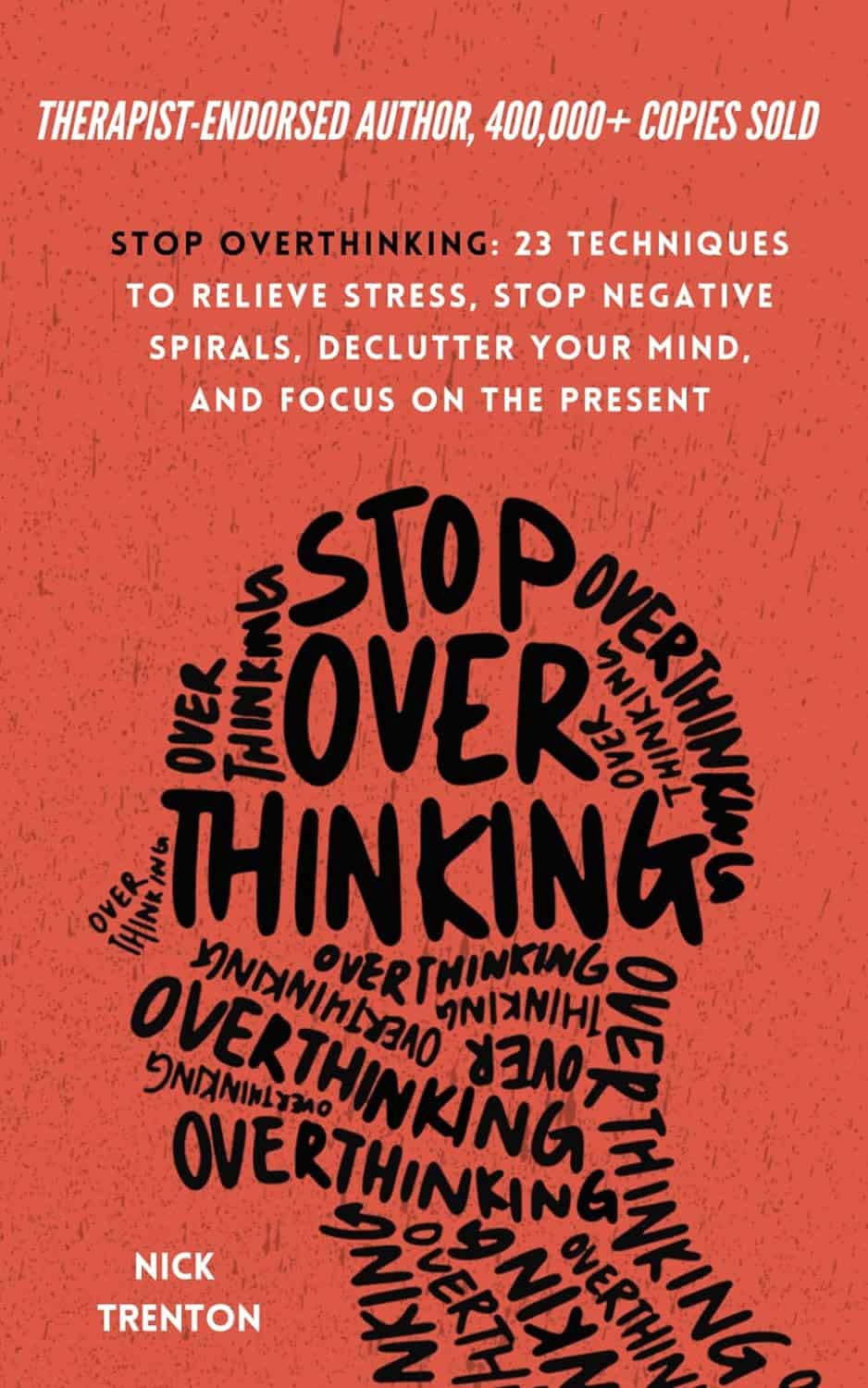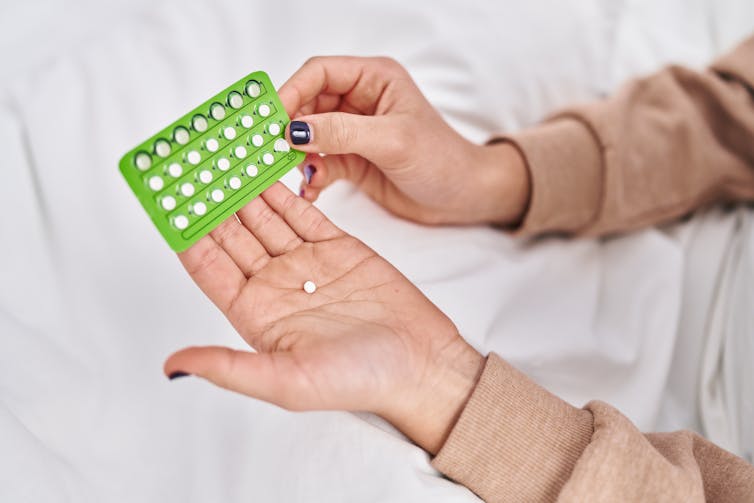
Margarine vs Butter – Which is Healthier
10almonds is reader-supported. We may, at no cost to you, receive a portion of sales if you purchase a product through a link in this article.
Our Verdict
When comparing margarine to butter, we picked the butter.
Why?
Once upon a time, when margarines were filled with now-banned trans fats, this would have been an easy win for butter.
Nowadays, the macronutrient/lipid profiles are generally more similar (although margarine often has a little less saturated fat), except one thing that butter has in its favor:
More micronutrients. What exactly they are (and how much) depends on the diet and general health of the cows from whom the milk to make the butter came, but they’re not something found in plant-based butter alternatives at this time.
Nevertheless, because of the saturated fat content, it’s not advisable to use more than a very small amount of either (two tablespoons of butter would put one at the daily limit already, without eating any other saturated fat that day).
Read more: Butter vs Margarine
Don’t Forget…
Did you arrive here from our newsletter? Don’t forget to return to the email to continue learning!
Recommended
Learn to Age Gracefully
Join the 98k+ American women taking control of their health & aging with our 100% free (and fun!) daily emails:
-
Stop Overthinking – by Nick Trenton
10almonds is reader-supported. We may, at no cost to you, receive a portion of sales if you purchase a product through a link in this article.
This book is exactly what it says on the tin. We are given twenty-three techniques to relieve stress, stop negative spirals, declutter your mind, and focus on the present, in the calm pursuit of good mental health and productivity.
The techniques are things like the RAIN technique above, so if you liked that, you’ll love this. Being a book rather than a newsletter, it also takes the liberty of going into much more detail—hence the 200 pages for 23 techniques. Unlike many books, it’s not packed in fluff either. It’s that perfect combination of “to the point” and “very readable”.
If you’ve read this far into the review and you’re of two minds about whether or not this book could be useful to you, then you just might be overthinking it
Share This Post
-
Oral retinoids can harm unborn babies. But many women taking them for acne may not be using contraception
10almonds is reader-supported. We may, at no cost to you, receive a portion of sales if you purchase a product through a link in this article.
Oral retinoids are a type of medicine used to treat severe acne. They’re sold under the brand name Roaccutane, among others.
While oral retinoids are very effective, they can have harmful effects if taken during pregnancy. These medicines can cause miscarriages and major congenital abnormalities (harm to unborn babies) including in the brain, heart and face. At least 30% of children exposed to oral retinoids in pregnancy have severe congenital abnormalities.
Neurodevelopmental problems (in learning, reading, social skills, memory and attention) are also common.
Because of these risks, the Australasian College of Dermatologists advises oral retinoids should not be prescribed a month before or during pregnancy under any circumstances. Dermatologists are instructed to make sure a woman isn’t pregnant before starting this treatment, and discuss the risks with women of childbearing age.
But despite this, and warnings on the medicines’ packaging, pregnancies exposed to oral retinoids continue to be reported in Australia and around the world.
In a study published this month, we wanted to find out what proportion of Australian women of reproductive age were taking oral retinoids, and how many of these women were using contraception.
Our results suggest a high proportion of women are not using effective contraception while on these drugs, indicating Australia needs a strategy to reduce the risk oral retinoids pose to unborn babies.
Contraception options
Using birth control to avoid pregnancy during oral retinoid treatment is essential for women who are sexually active. Some contraception methods, however, are more reliable than others.
Long-acting-reversible contraceptives include intrauterine devices (IUDs) inserted into the womb (such as Mirena, Kyleena, or copper devices) and implants under the skin (such as Implanon). These “set and forget” methods are more than 99% effective.
Oral retinoids taken during pregnancy can cause complications in babies. Gorodenkoff/Shutterstock The effectiveness of oral contraceptive pills among “perfect” users (following the directions, with no missed or late pills) is similarly more than 99%. But in typical users, this can fall as low as 91%.
Condoms, when used as the sole method of contraception, have higher failure rates. Their effectiveness can be as low as 82% in typical users.
Oral retinoid use over time
For our study, we analysed medicine dispensing data among women aged 15–44 from Australia’s Pharmaceutical Benefit Scheme (PBS) between 2013 and 2021.
We found the dispensing rate for oral retinoids doubled from one in every 71 women in 2013, to one in every 36 in 2021. The increase occurred across all ages but was most notable in young women.
Most women were not dispensed contraception at the same time they were using the oral retinoids. To be sure we weren’t missing any contraception that was supplied before the oral retinoids, we looked back in the data. For example, for an IUD that lasts five years, we looked back five years before the oral retinoid prescription.
Our analysis showed only one in four women provided oral retinoids were dispensed contraception simultaneously. This was even lower for 15- to 19-year-olds, where only about one in eight women who filled a prescription for oral retinoids were dispensed contraception.
A recent study found 43% of Australian year 10 and 69% of year 12 students are sexually active, so we can’t assume this younger age group largely had no need for contraception.
One limitation of our study is that it may underestimate contraception coverage, because not all contraceptive options are listed on the PBS. Those options not listed include male and female sterilisation, contraceptive rings, condoms, copper IUDs, and certain oral contraceptive pills.
But even if we presume some of the women in our study were using forms of contraception not listed on the PBS, we’re still left with a significant portion without evidence of contraception.
What are the solutions?
Other countries such as the United States and countries in Europe have pregnancy prevention programs for women taking oral retinoids. These programs include contraception requirements, risk acknowledgement forms and regular pregnancy tests. Despite these programs, unintended pregnancies among women using oral retinoids still occur in these countries.
But Australia has no official strategy for preventing pregnancies exposed to oral retinoids. Currently oral retinoids are prescribed by dermatologists, and most contraception is prescribed by GPs. Women therefore need to see two different doctors, which adds costs and burden.
Preventing pregnancy during oral retinoid treatment is essential. Krakenimages.com/Shutterstock Rather than a single fix, there are likely to be multiple solutions to this problem. Some dermatologists may not feel confident discussing sex or contraception with patients, so educating dermatologists about contraception is important. Education for women is equally important.
A clinical pathway is needed for reproductive-aged women to obtain both oral retinoids and effective contraception. Options may include GPs prescribing both medications, or dermatologists only prescribing oral retinoids when there’s a contraception plan already in place.
Some women may initially not be sexually active, but change their sexual behaviour while taking oral retinoids, so constant reminders and education are likely to be required.
Further, contraception access needs to be improved in Australia. Teenagers and young women in particular face barriers to accessing contraception, including costs, stigma and lack of knowledge.
Many doctors and women are doing the right thing. But every woman should have an effective contraception plan in place well before starting oral retinoids. Only if this happens can we reduce unintended pregnancies among women taking these medicines, and thereby reduce the risk of harm to unborn babies.
Dr Laura Gerhardy from NSW Health contributed to this article.
Antonia Shand, Research Fellow, Obstetrician, University of Sydney and Natasha Nassar, Professor of Paediatric and Perinatal Epidemiology and Chair in Translational Childhood Medicine, University of Sydney
This article is republished from The Conversation under a Creative Commons license. Read the original article.
Share This Post
-
How Much Weight Gain Do Antidepressants Cause?
10almonds is reader-supported. We may, at no cost to you, receive a portion of sales if you purchase a product through a link in this article.
There’s a lot of talk in the news lately about antidepressants and weight gain, so let’s look at some numbers.
Here’s a study from July 2024 that compared the weight gain of eight popular antidepressants, and pop-science outlets have reported it with such snippets as:
❝Bupropion users were approximately 15–20% less likely to gain a clinically significant amount of weight than those taking the most common medication, sertraline.
The researchers considered weight gain of 5% or more as clinically significant.❞
Read in full: Study compares weight gain across eight common antidepressants
At this point, you might (especially if you or a loved one is on sertraline) be grabbing a calculator and seeing what 5% of your weight is, and might be concerned at the implications.
However, this is a little like if, in our This or That section, we were to report that food A has 17x more potassium than food B, without mentioning that food A has 0.01mg/100g and food A has 0.17mg/100g, and thus that, while technically “17x more”, the difference is trivial.
As a quick aside: we do, by the way, try to note when things like that might skew the stats and either wipe them out by not mentioning that they contain potassium at all (as they barely do), or if it’s a bit more, describing them as being “approximately equal in potassium” or else draw attention to the “but the amounts are trivial in both cases”.
Back to the antidepressants: in fact, for those two antidepressants compared in that snippet, the truth is (when we go looking in the actual research paper and the data within):
- sertraline was associated with an average weight change of +1.5kg (just over 3lb) over the course of 24 months
- bupropion was associated with an average weight change of +0.5kg (just under 1lb) over the course of 24 months
Sertraline being the most weight-gain-inducing of the 8 drugs compared, and bupropion being the least, this means (with them both having fairly even curves):
- sertraline being associated with an average weight change of 0.06kg (about 2oz) per month
- bupropion being associated with an average weight change of 0.02kg (less than 1oz) per month
For all eight, see the chart here in the paper itself:
Medication-Induced Weight Change Across Common Antidepressant Treatments ← we’ve made the link go straight to the chart, for your convenience, but you can also read the whole paper there
While you’re there, you might also see that for some antidepressants, such as duloxetine, fluoxetine, and venlafaxine, there’s an initial weight gain, but then it clearly hits a plateau and weight ceases to change after a certain point, which is worth considering too, since “you’ll gain a little bit of weight and then stay at that weight” is a very different prognosis from “you’ll gain a bit of weight and keep gaining it forever until you die”.
But then again, consider this:
Most adults will gain half a kilo this year – and every year. Here’s how to stop “weight creep”
That’s more weight gain than one gets on sertraline, the most weight-gain-inducing antidepressant tested!
What about over longer-term use?
Here’s a more recent study (December 2024) that looked at antidepressant use over 6 years, and found an average 2% weight gain over those 6 years, but it didn’t break it down by antidepressant type, sadly:
…which seems like quite a wasted opportunity, since some of the medications considered are very different, working on completely different systems (for example, SSRIs vs NDRIs, working on serotonin or norepinephrine+dopamine, respectively—see our Neurotransmitter Cheatsheet for more about those) and having often quite different side effects. Nevertheless, the study (despite collecting this information) didn’t then tabulate the data, and instead considered them all to be the same factor, “antidepressants”.
What this study did do that was useful was included a control group not on antidepressants so we know that on average:
- never-users of antidepressants gained an average of 1% of their bodyweight over those 6 years
- users-and-desisters of antidepressants gained an average of 1.8% of their bodyweight over those 6 years*
- continuing users of antidepressants gained an average of 2% of their bodyweight over those 6 years
*for this group, weight gain was a commonly cited reason for stopping taking the antidepressants in question
Writer’s anecdote: I’ve been on mirtazapine (a presynaptic alpha2-adrenoreceptor antagonist which increases central noradrenergic and serotonergic neurotransmission) for some years and can only say that I wish I’d been on it decades previously. I requested mirtazapine specifically, because I’m me and I know my stuff and considered it would most likely be by far the best fit for me out of the options available. Starting at a low dose, the only meaningful side effect was mild sedation (expected, and associated only with low-dose use); increasing after a couple of weeks to a moderate dose, that side effect disappeared and now the only remaining side effect is a slight dryness of the mouth, which is fine, as it ensures I remember to stay hydrated 🙂 anyway, my weight hasn’t changed (beyond very small temporary fluctuations) in the time I’ve been on mirtazapine. Disclaimer: the plural of anecdote is not data, and I can only speak for my own experience, and am not making any particular recommendation here. Your personal physiology will be different from mine, and may respond well or badly to any given treatment according to your own physiology.
Further considerations
This is touched on in the “Discussion” section of the latter paper (so do check that out if you want all the details, more than we can reasonably put here), but there are other factors to consider, for example:
- whether people were underweight/healthy weight/overweight at baseline (sometimes, a weight gain can be a good thing, recovering from an illness, and in the case of the illness that is depression, weight can swing either way)
- antidepressants changing eating and exercise habits (generally speaking: more likely to eat more and exercise more)
- body composition! How did they not cover this (neither paper did)?! Muscle weighs more than fat, and improvements in exercise can result in an increase in muscle and thus an increase in overall weight.
As researchers like to say, “this highlights the need for more high-quality studies to look into…” (and then the various things that went unexamined).
Want to know more?
Check out our previous main feature:
Antidepressants: Personalization Is Key!
Take care!
Share This Post
Related Posts
-
The Painkilling Power Of Opioids, Without The Harm?
10almonds is reader-supported. We may, at no cost to you, receive a portion of sales if you purchase a product through a link in this article.
When it comes to painkilling medications, they can generally be categorized into two kinds:
- non-opioids (e.g. ibuprofen, paracetamol/acetaminophen, aspirin)
- ones that actually work for something more serious than a headache
That’s an oversimplification, but broadly speaking, when there is serious painkilling to be done, that’s when doctors consider it’s time to break out the opioids.
Nor are all opioids created equal—there’s a noteworthy difference between codeine and morphine, for instance—but the problems of opioids are typically the same (tolerance, addiction, and eventual likelihood of overdose when one tries to take enough to make it work after developing a tolerance), and it becomes simply a matter of degree.
See also: I’ve been given opioids after surgery to take at home. What do I need to know?
So, what’s the new development?
A team of researchers have found that the body can effectively produce its own targetted painkilling peptides, similar in function to benzodiazepines (an opioid drug), but—and which is a big difference—confined to the peripheral nervous system (PNS), meaning that it doesn’t enter the brain.
- The peptides killing the pain before it can reach the brain is obviously good because that means the pain is simply not experienced
- The peptides not having any effect on the brain, however, means that the mechanism of addiction of opioids simply does not apply here
- The peptides not having any effect on the brain also means that the CNS can’t be “put to sleep” by these peptides in the same way it can if a high dose of opioids is taken (this is what typically causes death in opioid overdoses; the heart simply beats too slowly to maintain life)
The hope, therefore, is to now create medications that target the spinal ganglia that produce these peptides, to “switch them on” at will.
Obviously, this won’t happen overnight; there will need to be first a lot of research to find a drug that does that (likely this will involve a lot of trial and error and so many mice/rats), and then multiple rounds of testing to ascertain that the drug is safe and effective for humans, before it can then be rolled out commercially.
But, this is still a big breakthrough; there arguably hasn’t been a breakthrough this big in pain research since various opioid-related breakthroughs in the 70s and 80s.
You can see a pop-science article about it here:
And you can see the previous research (from earlier this year) that this is now building from, about the glial cells in the spinal ganglia, here:
Peripheral gating of mechanosensation by glial diazepam binding inhibitor
But wait, there’s more!
Remember what we said about affecting the PNS without affecting the CNS, to kill the pain without killing the brain?
More researchers are already approaching the same idea to deal with the same problem, but from the angle of gene therapy, and have already had some very promising results with mice:
Structure-guided design of a peripherally restricted chemogenetic system
…which you can read about in pop-science terms (with diagrams!) here:
New gene therapy could alleviate chronic pain, researchers find
While you’re waiting…
In the meantime, approaches that are already available include:
- The 7 Approaches To Pain Management
- Managing Chronic Pain (Realistically!)
- Science-Based Alternative Pain Relief ← when painkillers aren’t helping, these things might!
Take care!
Don’t Forget…
Did you arrive here from our newsletter? Don’t forget to return to the email to continue learning!
Learn to Age Gracefully
Join the 98k+ American women taking control of their health & aging with our 100% free (and fun!) daily emails:
-
What Omega-3 Fatty Acids Really Do For Us
10almonds is reader-supported. We may, at no cost to you, receive a portion of sales if you purchase a product through a link in this article.
What Omega-3 Fatty Acids Really Do For Us
Shockingly, we’ve not previously covered this in a main feature here at 10almonds… Mostly we tend to focus on less well-known supplements. However, in this case, the supplement may be well known, while some of its benefits, we suspect, may come as a surprise.
So…
What is it?
In this case, it’s more of a “what are they?”, because omega-3 fatty acids come in multiple forms, most notably:
- Alpha-linoleic acid (ALA)
- Eicosapentaenoic acid (EPA)
- Docosahexanoic acid (DHA)
ALA is most readily found in certain seeds and nuts (chia seeds and walnuts are top contenders), while EPA and DHA are most readily found in certain fish (hence “cod liver oil” being a commonly available supplement, though actually cod aren’t even the best source—salmon and mackerel are better; cod is just cheaper to overfish, making it the cheaper supplement to manufacture).
Which of the three is best, or do we need them all?
There are two ways of looking at this:
- ALA is sufficient alone, because it is a precursor to EPA and DHA, meaning that the body will take ALA and convert it into EPA and DHA as required
- EPA and DHA are superior because they’re already in the forms the body will use, which makes them more efficient
As with most things in health, diversity is good, so you really can’t go wrong by getting some from each source.
Unless you have an allergy to fish or nuts, in which case, definitely avoid those!
What do omega-3 fatty acids do for us, according to actual research?
Against inflammation
Most people know it’s good for joints, as this is perhaps what it’s most marketed for. Indeed, it’s good against inflammation of the joints (and elsewhere), and autoimmune diseases in general. So this means it is indeed good against common forms of arthritis, amongst others:
Read: Omega-3 fatty acids in inflammation and autoimmune disease
Against menstrual pain
Linked to the above-referenced anti-inflammatory effects, omega-3s were also found to be better than ibuprofen for the treatment of severe menstrual pain:
Don’t take our word for it: Comparison of the effect of fish oil and ibuprofen on treatment of severe pain in primary dysmenorrhea
Against cognitive decline
This one’s a heavy-hitter. It’s perhaps to be expected of something so good against inflammation (bearing in mind that, for example, a large part of Alzheimer’s is effectively a form of inflammation of the brain); as this one’s so important and such a clear benefit, here are three particularly illustrative studies:
- Inadequate supply of vitamins and DHA in the elderly: implications for brain aging and Alzheimer-type dementia
- Fish consumption and cognitive decline with age in a large community study
- Fish consumption, long-chain omega-3 fatty acids and risk of cognitive decline or Alzheimer disease
Against heart disease
The title says it all in this one:
But what about in patients who do have heart disease?
Mozaffarian and Wu did a huge meta-review of available evidence, and found that in fact, of all the studied heart-related effects, reducing mortality rate in cases of cardiovascular disease was the single most well-evidenced benefit:
How much should we take?
There’s quite a bit of science on this, and—which is unusual for something so well-studied—not a lot of consensus.
However, to summarize the position of the academy of nutrition and dietetics on dietary fatty acids for healthy adults, they recommend a minimum of 250–500 mg combined EPA and DHA each day for healthy adults. This can be obtained from about 8 ounces (230g) of fatty fish per week, for example.
If going for ALA, on the other hand, the recommendation becomes 1.1g/day for women or 1.6g/day for men.
Want to know how to get more from your diet?
Here’s a well-sourced article about different high-density dietary sources:
Don’t Forget…
Did you arrive here from our newsletter? Don’t forget to return to the email to continue learning!
Learn to Age Gracefully
Join the 98k+ American women taking control of their health & aging with our 100% free (and fun!) daily emails:
-
How Metformin Slows Aging
10almonds is reader-supported. We may, at no cost to you, receive a portion of sales if you purchase a product through a link in this article.
Metformin And How It Slows Down Aging
That’s a bold claim for a title, but the scientific consensus is clear, and this Research Review Monday we’re going to take a look at exactly that!
Metformin is a common diabetes-management drug, used to lower blood sugar levels in people who either don’t have enough insulin or the insulin isn’t being recognized well enough by the body.
However, it also slows aging, which is a quality it’s also been studied for for more than a decade. We’ll look at some of the more recent research, though. Let’s kick off with an initial broad statement, from the paper “The Use of Metformin to Increase the Human Healthspan”, as part of the “Advances in Experimental Medicine and Biology” series:
In recent years, more attention has been paid to the possibility of using metformin as an anti-aging drug. It was shown to significantly increase the lifespan in some model organisms and delay the onset of age-associated declines. Growing amounts of evidence from clinical trials suggest that metformin can effectively reduce the risk of many age-related diseases and conditions, including cardiometabolic disorders, neurodegeneration, chronic inflammation and frailty.
How does it work?
That’s still being studied, but the scientific consensus is that it works by inducing hormesis—the process by which minor stress signals cells to start repairing themselves. How does it induce that hormesis? Again, still being studied, but it appears to do it by activating a specific enzyme; namely, the AMP-activated protein kinase:
Read: Metformin-enhances resilience via hormesis
It also has been found to slow aging by means of an anti-inflammatory effect, as a bonus!
Any bad news?
Well, firstly, in most places it’s only prescribed for diabetes management, not for healthy life extension. A lot of anti-aging enthusiasts have turned to the grey market online to get it, and we can’t recommend that.
Secondly, it does have some limitations:
- Its bioavailability isn’t great in tablet form (the form in which it is most commonly given)
- It has quite a short elimination half-life (around 6 hours), which makes it great to fix transient hyperglycemia in diabetics—job done and it’s out—but presents a logistical challenge when it comes to something so pernicious as aging.
- Some people are non-responders (a non-responder, in medicine, is someone for whom a drug simply doesn’t work, for no obvious reason)
Want to know more? Check out:
Metformin in aging and aging-related diseases: clinical applications and relevant mechanism
Don’t Forget…
Did you arrive here from our newsletter? Don’t forget to return to the email to continue learning!
Learn to Age Gracefully
Join the 98k+ American women taking control of their health & aging with our 100% free (and fun!) daily emails:









